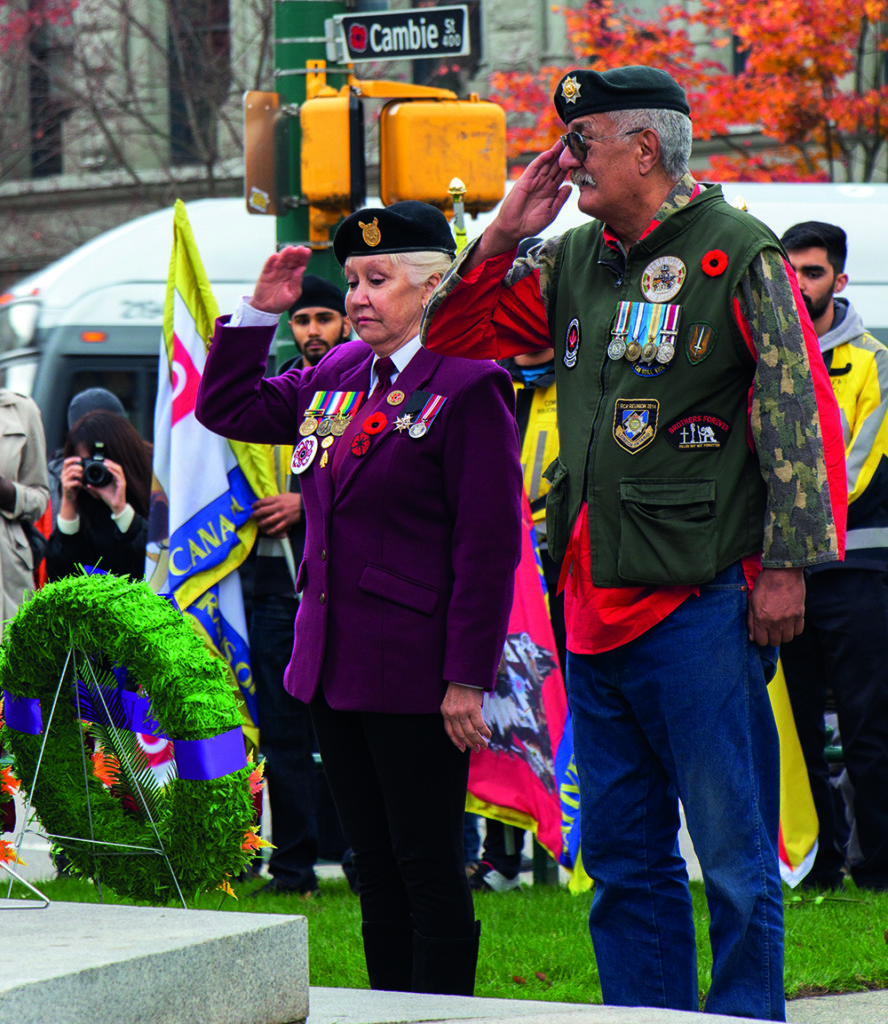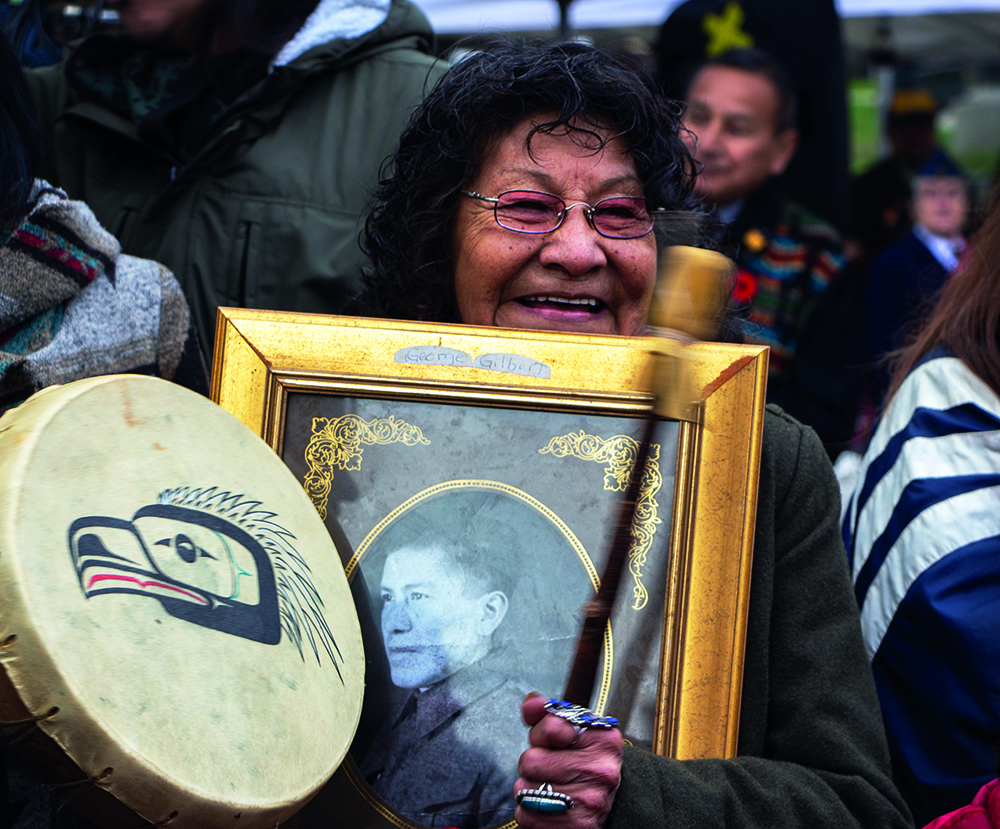
Canada reflects on the sacrifices made by Indigenous veterans
National Aboriginal Veterans Day honours veterans with music and prayer
Reported by Kirsten Clarke
When the call to war sounded in Canada, Indigenous men and women responded.
“We heard there was a need,” said Robert Nahanee, a member of the Squamish nation who served in the Canadian forces for a decade.
Two of Nahanee’s uncles served overseas during the Second World War. Jimmy worked as a mine detector while Eddy, a member of the 101st Airborne in the U.S. Army, was killed in action.
“There’s only one thing that we say,” Nahanee said. “We don’t glorify war.” The role of the warrior is a peacekeeper, he said. The Indigenous people who served Canada did so to keep peace in the world and their communities.

In order to enlist, the federal government required Indigenous people give up their status. This act of disenfranchisement meant that they became legal non-entities, as Indigenous people did not have the right to Canadian citizenship.
A day to reflect
Since its inauguration in Winnipeg in 1994, Nov. 8 has marked National Aboriginal Veterans Day in communities across Canada.
This year’s events in Vancouver began with a ceremony including prayers, drumming and loading a sacred pipe in honour of veterans.
Nov. 8 was also marked with a parade of veterans and supporters, led by a drum circle in the bed of a pickup truck that wound its way from Carnegie Community Centre to Victory Square.
After a wreath-laying ceremony at the cenotaph, the drum circle closed events with a song.
Memorializing loved ones

Viviene Rose Sandy smiled as she joined in with her own drum, holding a portrait of her late great uncle George Gilbert. Hailing from William’s Lake, Gilbert served during the Second World War.
Sandy remembers the effects that the war had on Gilbert. As a child, she often witnessed his PTSD.
Several speakers addressed the crowd at Victory Square, including navy veteran Joy Ward-Dockrey. Each stressed the importance of honouring the men and women who served and are serving, and the need to support those who are struggling when they return from active duty.
While both world wars had severe effects on all survivors, returning Indigenous veterans were “twice traumatized,” said Ward-Dockrey, who is also the spokesperson for Indigenous Veterans in the Lower Mainland.
Canadian veterans had access to pensions, land grants and medical benefits. Indigenous veterans were told to return to reservations where they were no longer members.
“So, what did they do?” said Ward-Dockrey, “They re-enlisted for the Korean War, because it was the only thing they knew and the only place they felt comfortable in a country that didn’t welcome them back.”
Relief on the battlefield
While Indigenous peoples faced discrimination at home and were initially discouraged from enlisting, they found relief on the battlefield, said Ward-Dockrey.
“It didn’t matter what the colour of our skin was because we were all equal while we were out there fighting for freedom and independence for our country,” he said.
Despite the traumatic legacy of the wars on Indigenous communities, those at Victory Square were proud to be able to celebrate veterans.
The message we should take from war, said Nahanee, is “to keep the peace. World peace. We’re human beings, we’ve got to live like that. We can do it.”
A Langara Elder shares her father’s experience in the war
The father of Langara’s Elder in Residence fought at Ypres and Vimy Ridge in the First World War.
Frederick Albert Sterling enlisted in the Canadian Expeditionary Forces while he worked at Douglas Lake Ranch. A skilled horseman and sharpshooter, Sterling – who has since passed away – served as a private in the 102nd and 121st battalions.
“He was glad to join,” said daughter Mary Jane Joe. “He left his horse and gear right there in the Nicola area.” Sterling completed basic training in Vernon, B.C. before he was sent to Ontario and, later, overseas.
Joe’s father didn’t often speak of the war, which he labelled “dirty” and “horrific,” but she and her siblings saw its effects – her father suffered from PTSD.
“At the Battle of Ypres, in the trenches, he remembered being the last man alive,” Joe said.
He told Joe he believed he was about to die and prayed to the Creator to return to his own land.
Sterling survived the Battle of Ypres but later in the war he was shot and spent two years recovering in Britain before returning home.
Sterling later served in the Second World War as a guard at the Japanese Canadian internment camp in Princeton, B.C.
The federal government estimates around 7,000 Indigenous people served in the First and Second World Wars. These numbers do not include the Métis and Inuit who also enlisted.


Comments are closed.